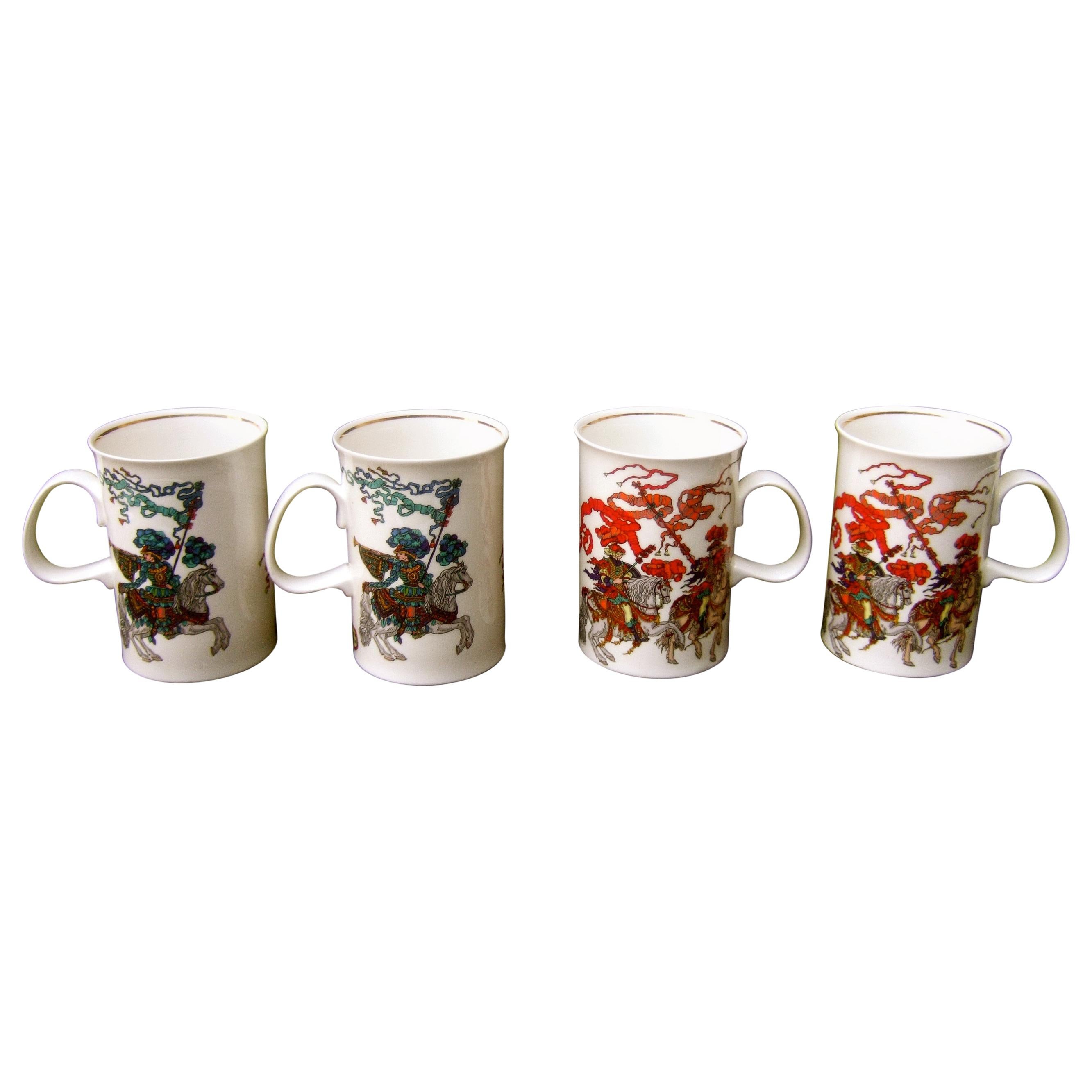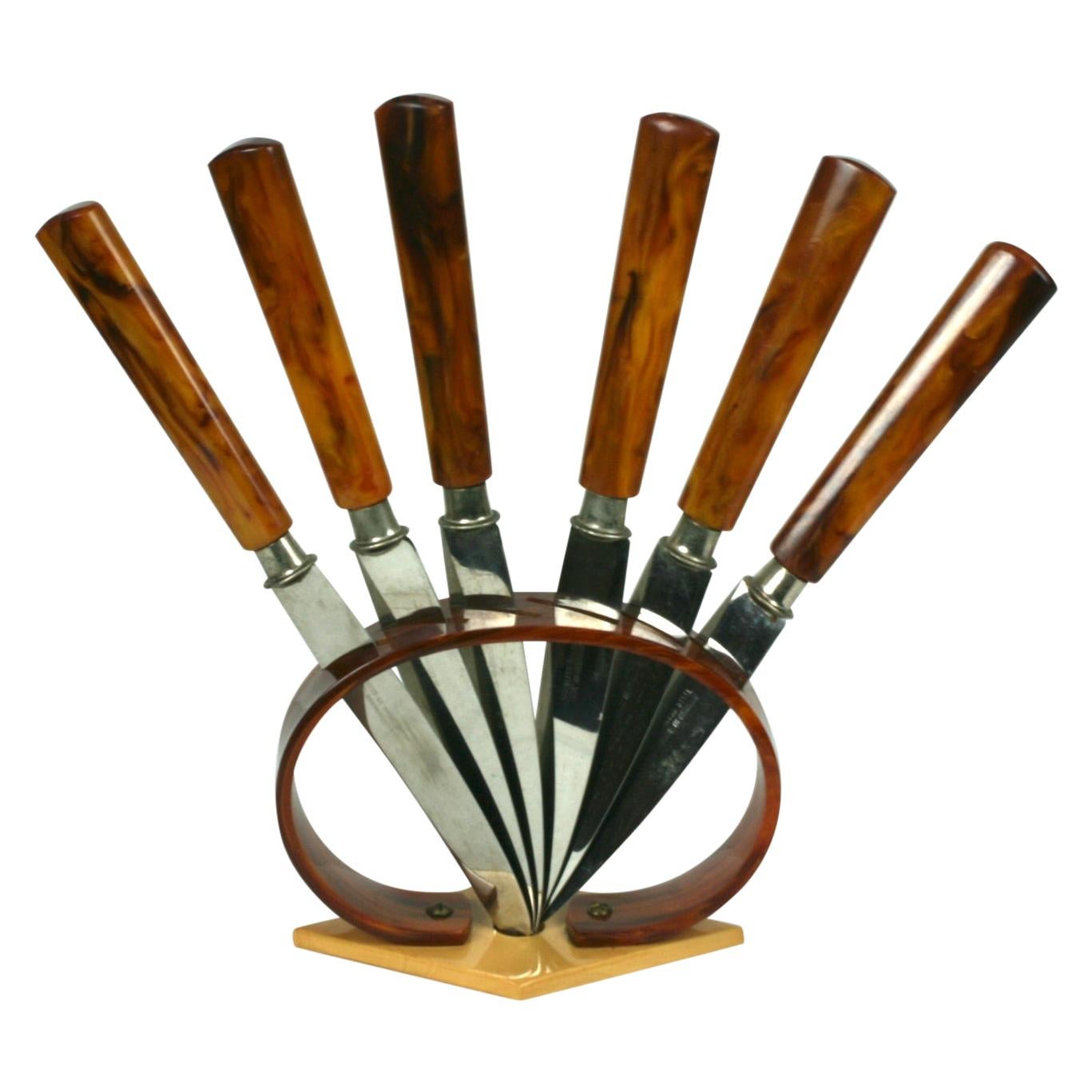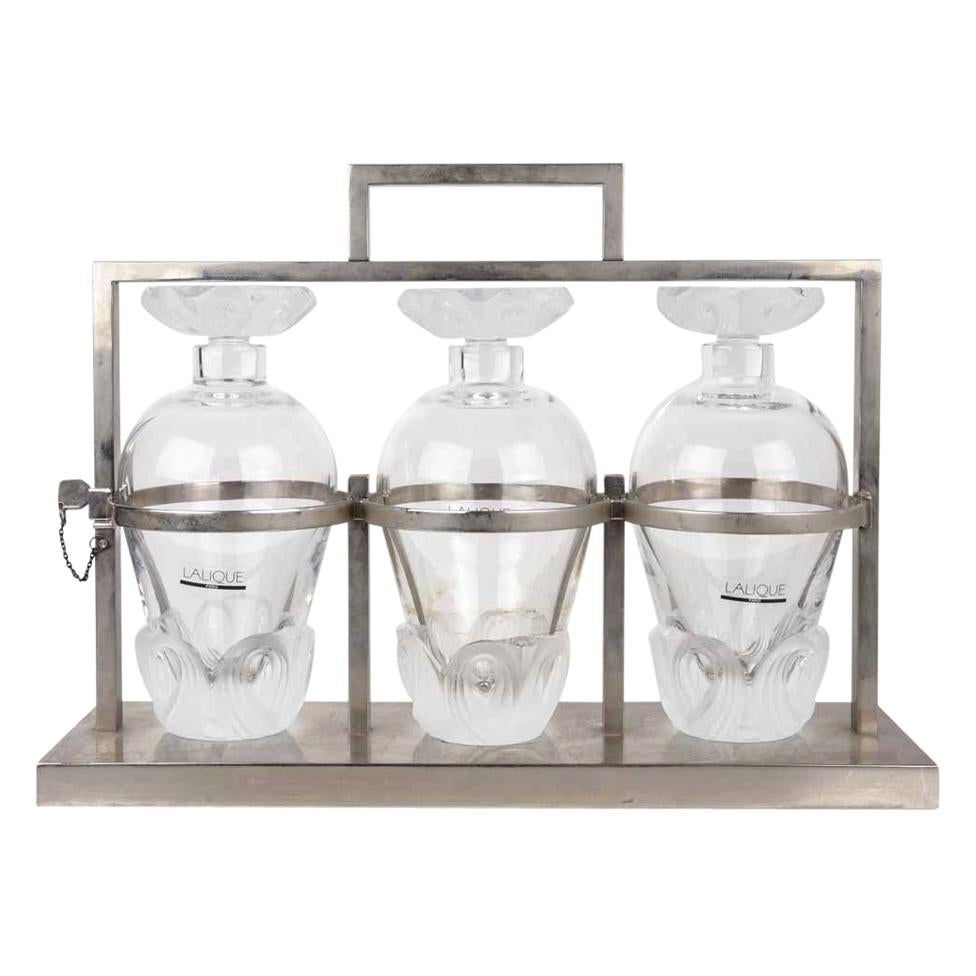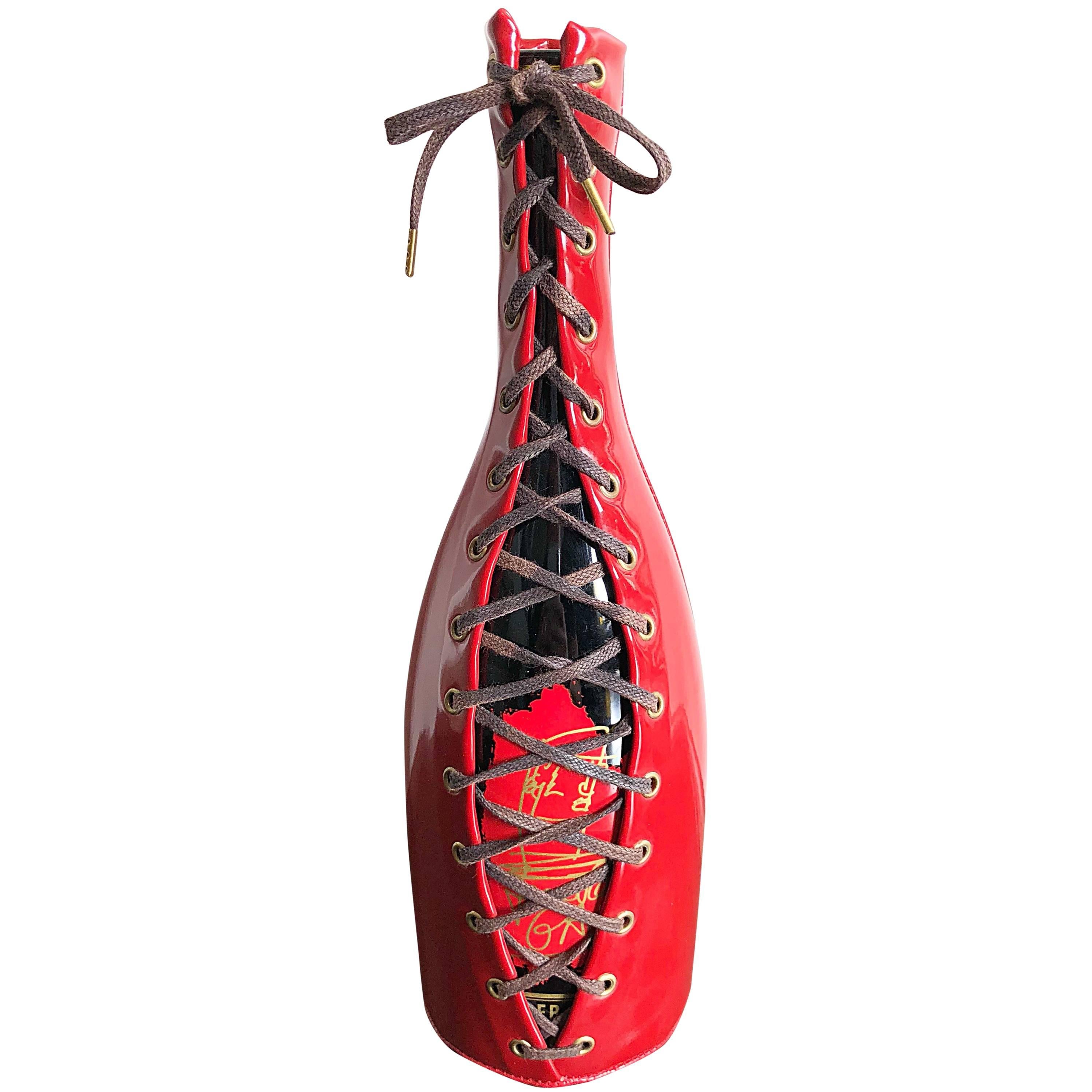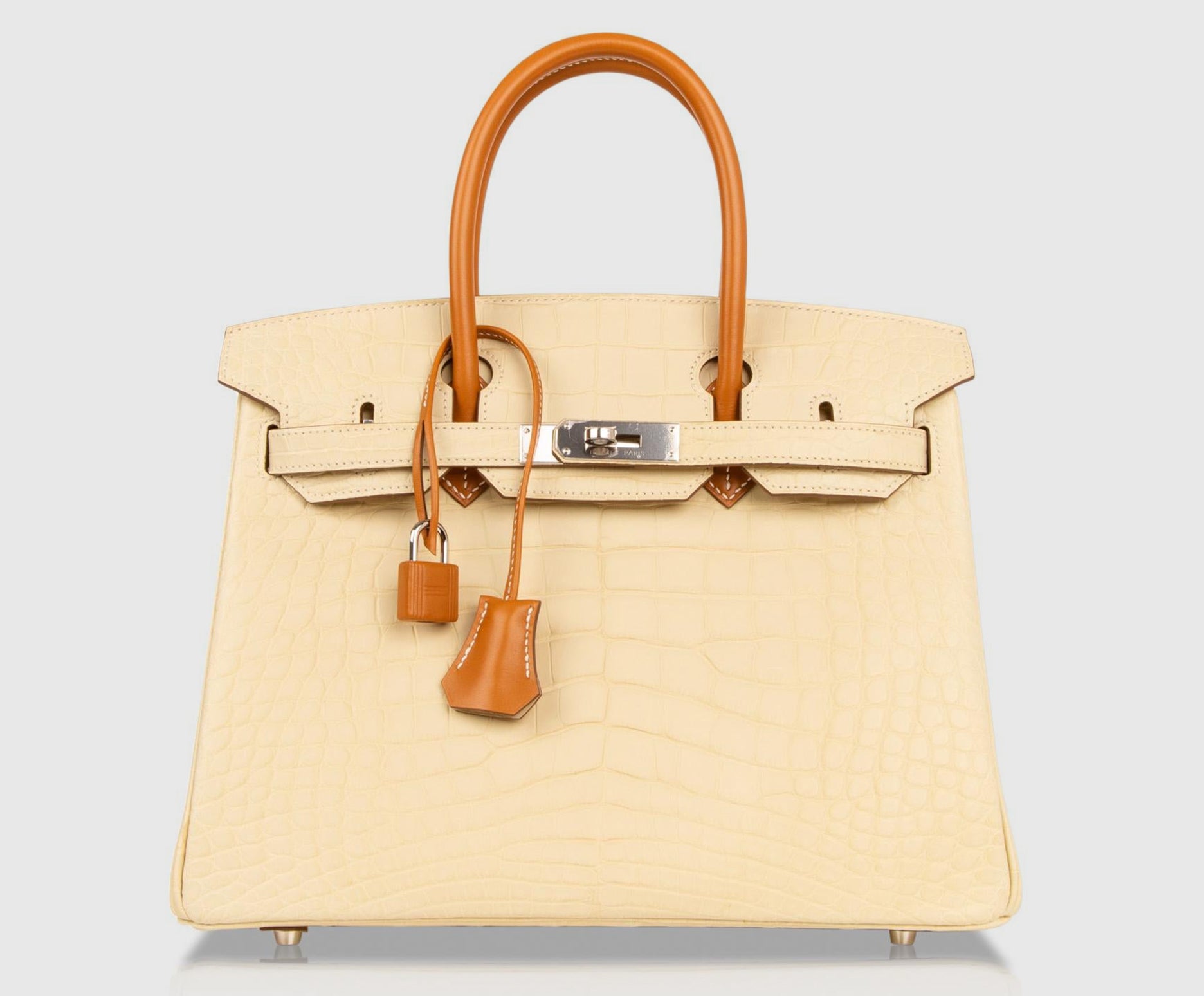Hermes Designer Adnet 1920s French ArtDeco Set 6ShotGlass Metal&Rosewood Carrier
About the Item
- Designer:
- Design:
- Dimensions:Height: 6.3 in (16 cm)Width: 1.78 in (4.5 cm)Length: 9.45 in (24 cm)
- Style:Art Deco (Of the Period)
- Place of Origin:
- Period:1920-1929
- Condition:Wear consistent with age and use.
- Seller Location:Chicago, IL
- Reference Number:1stDibs: LU3244219192342
Birkin Bag
Since its 1984 debut, the Hermès Birkin bag has become a coveted status symbol as much as it has an exclusive collector’s piece. The handbag is among the most expensive in the world, and the appetite for the accessory is well-known inside and outside the fashion industry.
The history of the Birkin bag owes to a chance meeting on a flight from Paris to London in 1981, when British actress, singer and model Jane Birkin found herself describing her ideal handbag to another passenger. The two travelers hadn’t properly met, so it wasn’t immediately clear that she was practically brainstorming a future product with Hermès chairman Jean-Louis Dumas. When the latter identified himself, he told the star that Hermès was prepared to produce the accessory of her dreams. A discussion followed that involved rough sketches on an Air France airsickness bag, and the Birkin was introduced three years later.
A spacious and symmetrical rectangular bag that features dual handles as compared to the trapezoidal single-handle frame of the company’s popular Kelly, the Birkin has amassed a rabidly enthusiastic fan base since its inception.
Because it is so pricey and sought after, the goatskin-lined Birkin has frequently been targeted by counterfeiters, and its modest aesthetic and understated branding prevent it from being easily discernible from fakes. An array of metallic hardware fixtures, most often produced in gold or palladium, helps distinguish this dynamic handcrafted tote, and likely assisted the French police officers who broke up an international counterfeit Birkin operation in 2012.
Among the characteristics that are integral to determining a Birkin’s authenticity as well as rendering it a truly desirable collector’s item are the signature lock and accompanying keys. The latter are tucked inside a lanyard made from a single piece of leather and draped around one of the handles. There are scuff-resistant base studs, too — a defense system to shield the durable leather exterior from damage should its owner park it on a gritty sidewalk. The studs are hammered in and can’t twist off, so there isn’t any danger of the bag losing its feet.
Each tote is hand-sewn according to Hermès’s centuries-old saddle-stitching technique, and the exotic leathers — a variety that includes ostrich and crocodile — are subsequently painted and polished by house craftsmen in France. Owing to the artisan construction effort behind this globally adored accessory, it may take up to several days to produce a single Birkin bag.
Jane had to wait for hers, too.
Hermès
For Hermès, what began as a maker of leather equestrian goods for European noblemen would eventually grow into one of the most storied fashion labels in the world. In 1837, German-born French entrepreneur Thierry Hermès opened a saddle and harness purveyor in Paris. Gradually, the house extended into accessories and luggage for its riders, and today, in paying homage to its origins, the family-run luxury brand resurfaces horse motifs in everything from clothing and modernist jewelry to pillows and handbags.
The first top-handled bag ever produced by Hermès was the Haut à courroies, which made its debut in 1892. A tall bag secured with a folded leather flap (fastened with bridle-inspired straps), it was designed to transport riding boots and a harness.
As the world made the switch from horse to automobile, the bag adapted, becoming a multifunctional travel satchel instead of a designated saddlebag. Today, 120 years later, the HAC remains in Hermès’s line — and its distinctive flap and clasping straps have laid the groundwork for some of the house’s other iconic bags.
In the 1930s, Robert Dumas (son-in-law to Émile-Maurice Hermès, Thierry’s grandson) designed a smaller, trapezoidal take on the flap bag with a handle and two side straps. Later, actress Grace Kelly, then engaged to Prince Rainier of Monaco, is said to have used one of these bags to conceal her pregnancy during the 1950s. Because she was photographed constantly, the coverage catapulted her handbag to international popularity.
In 1977, Hermès officially renamed the model for her, and the Kelly bag was born. Each Kelly bag takes between 18 and 25 hours to produce, and its 680 hand stitches owe solely to one Hermès artisan.
Robert Dumas was also responsible for another one of the brand’s most iconic offerings: the launch of its first silk scarf on the occasion of Hermès’s 100th anniversary in 1937. Based on a woodblock designed by Dumas and printed on Chinese silk, the accessory was an immediate hit.
Today, vintage Hermès scarves, typically adorned in rich colors and elaborate patterns, serve many functions, just as they did back then. Well-heeled women wear it on their heads, around their necks and, in a genius piece of cross-promotion, tied to the straps of their Hermès bags. Kelly even once used one as a sling for her broken arm.
In 1981, Robert Dumas’s son Jean-Louis Dumas, then Hermès chairman, found himself sitting next to French actress and musician Jane Birkin on a plane, where she was complaining about finding a suitable carryall for the necessary accoutrements of motherhood. After the two travelers were properly introduced, Birkin helped design Jean-Louis’s most famous contribution to the Hermès canon: the Birkin bag, a roomy, square catchall with the HAC’s trademark leather flap top and the addition of a lock and key.
Owing to the brand’s legendary commitment to deft, handcrafted construction, the Birkin is an investment that is coveted by collectors everywhere.
While the Kelly and Birkin may be standouts, gracing the arms of everyone from royal heiresses to hip-hop stars in the past few decades, the handbags are but a small part of Hermès’s fashion offerings.
Since the 1920s, the brand has produced some of the most desirable leather goods in the world. There’s the Constance bag, a favorite of Jacqueline Kennedy, the recently relaunched 1970s-era Evelyne and, on the vintage market, a slew of designs dating back to the 1920s.
Good design never goes out of style. Find a variety of vintage Hermès handbags, day dresses, shoes and more on 1stDibs.
- ShippingRetrieving quote...Ships From: North Adams, MA
- Return PolicyA return for this item may be initiated within 1 day of delivery.
- Vintage EnameledSilverHeartPendants Linked AdjustableChain Decor Belt NecklaceLocated in Chicago, ILThis vintage amusing enameled silver pendant adjustable-chain unsigned necklace, belt or novel interior decoration features heart-shaped two-inch...Category
Late 20th Century Decorative Objects
- LimitedEdition Vase AperitifGlass JeanNouvel 2002 Signed for French LiqueurSuzeBy DaumLocated in Chicago, ILAs a signed and 2002-dated limited edition, French architect and furnishings designer Jean Nouvel was commissioned to create this yellow-accented vase or aperitif glass for one of th...Category
Early 2000s French Vases
- France LimitedEdition 1878Mignot 9LeadFigurines BoxSet Can-CanStageBar CuriosityLocated in Chicago, ILTitled "French Can-Can", this rare limited-edition signed boxed unfolding-stage complete set with nine miniature hand-painted lead and pewter cabaret figurines was originally a one-o...Category
Late 20th Century French Curiosities
- Couture TextileArt Vienna Austria ArtistSigned Vintage Brocade&Silk TeddyBearToyLocated in Chicago, ILAs unique vintage handcrafted textile art including a 20th-Century tag with its artist signature, Vienna-Austria origin and stuffing content, this multi-color "clown" teddy bear has ...Category
20th Century Austrian Toys
- Antique 1920-40 Surrealist Sculpture Unique Set Hammered SteelWire Female TorsosLocated in Chicago, ILThis antique Surrealist sculpture set of two one-of-a-kind female figurines was handmade in hammered steel wire with patina estimated as early as the 1920s. Each ribald three-dimensional self-standing torso study of a woman features either three spiral springs (suggesting pregnant belly with large breasts...Category
Early 20th Century Unknown Sculptures
- Couture MartinMargiela 1998 WorkOnPaper & Artisanal Line0 WhiteLingerie BoxedSetBy Maison Martin Margiela, Martin MargiellaLocated in Chicago, ILAs conceptual art while he transitioned to Hermes Creative Director in 1998, Belgian Martin Margiela--whose creations today debut in the setting of a contemporary-art gallery priced at upwards of EU$150,000--created this stenciled or block print. Conceived by arguably the most culturally influential contemporary fashion designer since Gabriel "Coco" Chanel, it is part of a limited-edition-of-two white-boxed set that includes the couture Maison Martin Margiela "Artisanal Line 0" body-harness lingerie in its maker's signature color white for Spring 1998. The same lingerie--one white and the other black--starred in a film made by Margiela among the five that he screened to present his Spring/Summer 1998 "Flat Collection" in Paris at the Conciergerie. In that film titled "4", which begins with a view of the iconic topless tabi "boots", the hands of Margiela's white-labcoat-clad assistants enter the frame to manipulate different garments on a model who initially wears the exterior lingerie (see our photos) as if jewelry. A simple dark collared coat, a white collared button-down shirt, and a dark button-down cardigan--all with the "displaced neckline" or "displaced shoulder" of the flat-hanging clothes--are transformed into new collarless plunging v-neck garments, which appear to be ruched when folded under the harness of the lingerie. Both black versions of the lingerie are in museum collections. In Martin Margiela's home-country, the ModeMuseum (MoMu) archived its collected piece as OBJ7660. In the 2018 Parisian retrospective exhibition at Musee de la Mode/Palais Galleria when its artistic director was Martin Margiela (working with Curator Alexandre Samson), the second black lingerie was featured on a mannequin and collected the same year by the Vogue Paris Foundation. Other conceptual designs from this same 1998 collection of jewelry were acquired by TheMet museum in Manhattan. Without the restriction of the use and function of clothing, the small uncreased print--on a card that can be removed from the interior-box bottom that it loosely spans--shows the buyer how to endlessly fashion unique tops using the structural-elastic lingerie as an undergarment for their own pre-worn button-down shirts. This is a more obvious example of the once avant-garde concept of anti-fashion upcycling that Martin Margiela introduced to challenge social and fashion-industry norms by the 1990s, which echos the revolutionary anti-art of Marcel Duchamp. Essentially, valuable art/fashion can be made from everyday vintage objects. While Duchamp did so in 1917 with a men's porcelain urinal titled "Fountain" attached to a gallery exhibition wall, they both made the point that it is the way that such items are reassembled that can make the result a progressive statement. What makes the print so special and worthy of framing for display is that, without words, the three numbered images on a single white card encapsulate the before-its-time fashion manifesto of Martin Margiela to recycle fashion in remarkable new wearable ways, such as harnessed by his unique lingerie. According to The New York Times in its 2021 feature-story that reflected on his radical fashion design and delved into his crossover art, Margiela "changed how we dressed in the 1990s", while his art embodies "the visionary man he has always been." At a turning-point shortly after Margiela designed this couture set in 1997, his personal manifesto became more difficult to accomplish in his fashion career as the new leader of France's historic luxury fashion-house Hermes, for which his first womenswear collection was presented for Autumn/Winter 1998. Frustrated by the limitations of the industrialized luxury trade and conglomerate conflicts with his closely guarded privacy, the famously "invisible" designer pre-maturely retired from the fashion industry in 2009 to independently build on his clever artistry in other mediums. Margiela continues to demonstrate what he often told his fashion teams: "The less you have, the more creative you are as a designer." This minimal finely-crafted lingerie without size or gender restriction--composed of adjustable "polya-elasthanne" straps with a clear anti-slip strip on the underside and three silver-plated metal double-rings--can be worn either as a concealed structural undergarment or as a visible jewelry-like body harness in appreciation of its meaning as a foundation for recycling fashion, pure form, and meaningful color. While the initial Maison Martin Margiela ready-to-wear brand tag until the late 1990s was a distinct corner-sewn unbranded white label accompanied by tags for origin and materials/care, the couture version for this lingerie is a single tiny white unbranded tag stitched in a line near the end of the waist strap, noting in English, "Made In France," with succinct material/care identification. The set's original white unbranded box and its white black-typed couture-identification sticker complete the "invisible-brand" aesthetic. We interpret the black-type codes on the aged box-sticker (“E98 ST HAUT; Struct Elas Blanc; 02; TU"): Spring 1998 Haute Couture; white structural-elastic garment; Artisanal Line 0 edition of two; one size only. The print, lingerie and box are in very good condition as shown in the photos with only one mark on the rear edge of the exterior box-lid. Although initially tried on by the sole owner to realize a restructured shirt, the lingerie body-harness was never worn. It was collected in Belgium at the Brussels boutique where Martin Margiela initially sold his brand with his founding business-partner Jenny Meirens since 1988. Prior, Margiela worked for several years as a fashion-design assistant to Parisian Jean Paul Gaultier. Both designers have since received independent museum retrospectives internationally--from Paris' Grand Palais and Musee Palais Galliera (The City of Paris Fashion Museum) to NYC's The Brooklyn Museum and Antwerp's MoMu. While others continue to try, Martin Margiela (b.1957) is the only leading fashion designer to have made a full-time transition to the commercial contemporary-art world with such highly valued works. As a rare revealing piece of both fashion and art history, the increasing value of this Maison Martin Margiela 1997...Category
1990s French Sculptures
- Gucci Set of Four English Bone China Mugs in Gucci Presentation Box c 1980sBy GucciLocated in University City, MOGucci Set of four English bone China mugs in Gucci cardboard presentation box c 1980 The four porcelain mugs are embellished with enamel stenciling tha...Category
1980s British Ceramics
- Gucci Leather Clad FlaskBy GucciLocated in New York, NYGucci Leather Clad Flask from the 1970's with lariat to be worn as accessory. Beautifully constructed of leather clad metal with screw off cap. Flask is detachable from lariat. Flask measures 4.25" with a 40" leather lariat...Category
1970s Italian Barware
- Art Deco Bakelite Fruit Knife SetLocated in New York, NYArt Deco Bakelite Fruit Knife Set from the 1930's. Made in Germany. Butterscotch bakelite handled knives are set into a bakelite stand designed to disp...Category
1930s German For The Table
- Lalique Fleurs 3 Whiskey Decanter Set 1990 Very RareBy LaliqueLocated in Miami, FLGuaranteed authentic rare Lalique vintage Fleurs 3 Whiskey Decanter tantalus set. Each 8.25" bottle is signed Lalique France and has the number 13353 sticker. A heavy chrome case hol...Category
1990s French Barware
- Jean Paul Gaultier For Piper Heidsieck Corset Champagne Bottle Holder, 1990By Jean Paul GaultierLocated in San Diego, CARare late 90s JEAN PAUL GAULTIER for PIPER-HEIDSIECK red and gold vinyl corset champagne bottle, and holder. Limited edition series, that ...Category
1990s French Decorative Objects
- Versace Rosenthal 1990s Porcelain Hot Flowers Salad PlateBy Versace, RosenthalLocated in Scottsdale, AZIntroducing the Versace Rosenthal 1990s Porcelain Hot Flowers Salad Plate, a stunning and luxurious addition to your tableware collection. This porcelain salad/dessert plate features...Category
1990s Italian Barware
Recently Viewed
View AllRead More
How to Spot a Fake Hermès Birkin Bag
The iconic Birkin bag is much coveted — and often copied. Find out how to tell the real deal from a convincing fake. Of course, you don't have to worry about this on 1stDibs, where every seller is highly vetted.
These Custom and Rare Birkin Bags Are a Collector’s Dream
An Hermès Birkin might be on many fashion lovers' wish lists, but to the hardcore collector, one is never enough. For every kind of Birkin-phile, we present some of the most exclusive bags from our discerning dealers.
